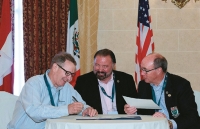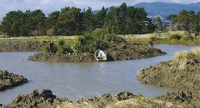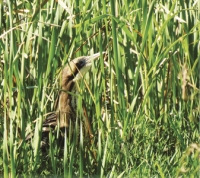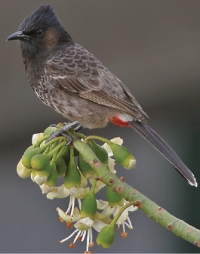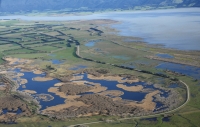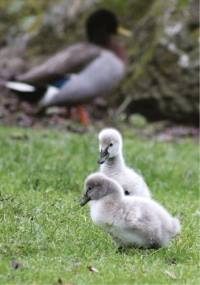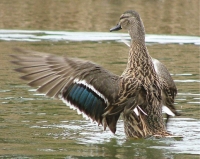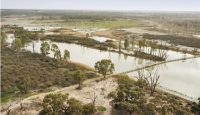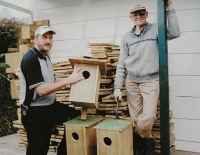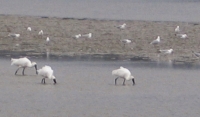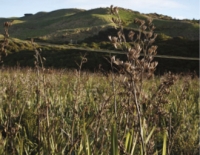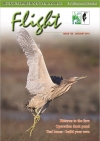
Issue 158
The last few months since my appointment at the AGM in Napier, has gone quickly. Looking back we are making good progress on a number of fronts. The 1200 metre low bund was constructed at Wairio to capture and hold extra water and it is performing exactly as it was designed. When I was on…
Published in
Issue 158
Tagged under
WETmak is a free online Wetland Monitoring and Assessment Kit aimed at groups working on wetland restoration projects in New Zealand. It includes a range of monitoring techniques and methods of assessing the impact of restoration work, all designed to minimise the need for expensive or complicated equipment. The kit is available in different formats…
Published in
Issue 158
Tagged under
Ducks Unlimited Canada (DUC) pats its own back – and so they should. It has been 75 years in the making, but they say wetland and waterfowl conservation has only just begun. DUC celebrated its 75th anniversary in 2013. That’s three-quarters of a century of work conserving critical wetlands including marshes and ponds. Together, they…
Published in
Issue 158
Tagged under
Top of the Flyways: DUC celebrates 75 years of conservation excellence In the heart of the prairies at the height of fall migration, Ducks Unlimited Canada (DUC) celebrated 75 years of conservation excellence with friends and colleagues from across North America. A special Top of the Flyways convention took place on October 5, 2013, with…
Published in
Issue 158
Tagged under
Our business is to harness community, business and government resources to restore and develop lost wetland areas within New Zealand. Wetland Care members recognise that wetlands are vital to the wellbeing of the environment, acting as huge ecological sponges by soaking up pollutants and filtering water before it reaches streams, rivers, lakes, aquifers and the…
Published in
Issue 158
Tagged under
Bitterns are an iconic wetland bird which is becoming increasingly rare through wetland loss and predation by mammalian predators. They are the apex avian predator in many wetlands and their presence gives an indication of overall wetland condition and health. I was fortunate that Greater Wellington Regional Council engaged me last year through my small…
If you live in the Auckland region and see or hear a Red-vented bulbul, ring 0800 08 99 66 and you could receive a $1000 if your information leads to a capture. Reward period runs to the end of February. The reward for information leading to the capture of this pest bird was increased from…
Published in
Issue 158
Tagged under
In late November Steve Playle did a trap run at Boggy Pond and Wairio. The count was 1 ferret, 1 rat and 10 hedgehogs. “The ferret was a big bugger and was caught along the stop bank between Mathews and Boggy. This took the total predator count to 23 ferrets, 1 stoat, 2 weasels, 4…
Published in
Issue 158
Tagged under
As a cataloguer in the library at Massey University in the Manawatu Judi is in just the right place to follow her interest in photography and birds. These photos were taken beside the small lake in the University grounds.
Published in
Issue 158
Tagged under
With about 90 percent of New Zealand’s wetland lost over the past 150 years, Fish & Game NZ realises there’s a compelling need to assess the role that ponds play in successfully managing waterfowl. Ponds have been established across the New Zealand landscape for various purposes including stock watering, irrigation, storm water capture, effluent ponding,…
Published in
Issue 158
Tagged under
Nearly 700 hectares of wetlands at Banrock Station are being artificially flooded. This is the first time in five years the area near Kingston-onMurray, has seen flooding. Banrock Station, in the South Australian Riverland, is on the Ramsar list of internationally significant wetlands. A new regulator is pumping 2.4 gigalitres of water into the wetlands,…
Published in
Issue 158
Tagged under
Pateke Spotter: On the October 5 last year, Wayne Watson counted 32 Pateke at Whananaki, on Northland’s east coast - just north of Whangarei. DU released Pateke at Whananaki in the 1980s and while they survived for long periods the massive predator expansion in Northland caught up with them, but now there is some serious…
The plight of the world’s wetlands is highlighted annually by World Wetlands Day, and the 2011 celebration also coincided with the 40th anniversary of the Ramsar Convention - an international agreement to promote and protect freshwater environments. See page 14. Since the agreement was signed in 1971, 186 million hectares of wetlands have been protected…
Published in
Issue 158
Tagged under
These nest box instructions were first used in an early Flight, and have proved very effective since then. So for the handy men and women among our members here is a new occupation for you over the summer months. Introduction Since its inception in New Zealand, Ducks Unlimited has been advocating the provision of nest boxes…
Published in
Issue 158
Tagged under
Yet another immigrant from Australia, royal spoonbills were known to Maori as kotuku ngutu papa so must have visited here for many years. Their numbers seem to have increased in the early 1940s. Some settled in the Waitangiroto River at Okarito. They have extended their range and now breed in a number of places, including…
Staff at Pukaha Mount Bruce were excited in late October last year with the arrival of the first whio (blue duck) to be hatched there in over 15 years. The only one of four eggs to hatch, the duckling was raised with three other ‘exotic’ ducklings. The duckling’s mother was then put on another clutch…
Published in
Issue 158
Tagged under
Coming soon – World Wetlands Day, the Ramsar Convention’s annual campaign day February 2, 2014. The theme this year is Wetland and Agriculture, a topic of relevance to almost everyone involved in wetlands! Visit the Ramsar Secretariat’s web site www.ramsar.org to find out more. Hard and soft copy materials (poster, leaflet, cartoon etc), will be…
Published in
Issue 158
Tagged under


